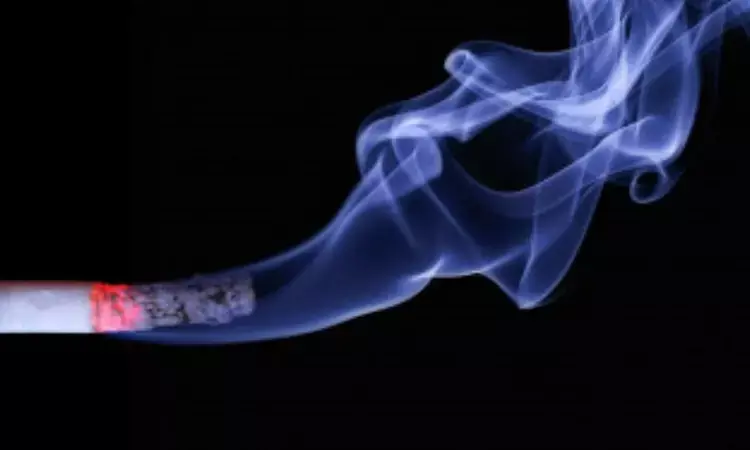- Home
- Medical news & Guidelines
- Anesthesiology
- Cardiology and CTVS
- Critical Care
- Dentistry
- Dermatology
- Diabetes and Endocrinology
- ENT
- Gastroenterology
- Medicine
- Nephrology
- Neurology
- Obstretics-Gynaecology
- Oncology
- Ophthalmology
- Orthopaedics
- Pediatrics-Neonatology
- Psychiatry
- Pulmonology
- Radiology
- Surgery
- Urology
- Laboratory Medicine
- Diet
- Nursing
- Paramedical
- Physiotherapy
- Health news
- Fact Check
- Bone Health Fact Check
- Brain Health Fact Check
- Cancer Related Fact Check
- Child Care Fact Check
- Dental and oral health fact check
- Diabetes and metabolic health fact check
- Diet and Nutrition Fact Check
- Eye and ENT Care Fact Check
- Fitness fact check
- Gut health fact check
- Heart health fact check
- Kidney health fact check
- Medical education fact check
- Men's health fact check
- Respiratory fact check
- Skin and hair care fact check
- Vaccine and Immunization fact check
- Women's health fact check
- AYUSH
- State News
- Andaman and Nicobar Islands
- Andhra Pradesh
- Arunachal Pradesh
- Assam
- Bihar
- Chandigarh
- Chattisgarh
- Dadra and Nagar Haveli
- Daman and Diu
- Delhi
- Goa
- Gujarat
- Haryana
- Himachal Pradesh
- Jammu & Kashmir
- Jharkhand
- Karnataka
- Kerala
- Ladakh
- Lakshadweep
- Madhya Pradesh
- Maharashtra
- Manipur
- Meghalaya
- Mizoram
- Nagaland
- Odisha
- Puducherry
- Punjab
- Rajasthan
- Sikkim
- Tamil Nadu
- Telangana
- Tripura
- Uttar Pradesh
- Uttrakhand
- West Bengal
- Medical Education
- Industry
Secondhand smoke exposure may contribute to lead exposure in children and adolescents

USA: Exposure to secondhand tobacco smoke (SHS) may be a source of blood lead levels (BLLs) in US children and adolescents, suggested a cross-sectional analysis of NHANES 2015–2018.
"Efforts to reduce lead exposure in adolescents and children should include strategies to reduce secondhand tobacco smoke exposure," the researchers wrote in their study published in BMC Public Health.
Lead exposure has long been a known health risk, especially for young children. Research has found that even at low levels, chronic exposure to lead can cause damage to the brain and other organs and cause problems with cognitive and motor skills. In response, public health officials have determined that there is no safe exposure level and have made great efforts to eliminate lead-based paint and lead pipes in homes and phase out the use of leaded gasoline.
But another possible source of lead exposure in children has been largely overlooked: secondhand smoke.
The study explored the relationship between secondhand smoke and lead exposure in children. In the study, Alexander Obeng, a doctoral student in the Department of Environmental and Occupational Health at the Texas A&M University School of Public Health, analyzed data on blood lead levels and secondhand smoke exposure in children and adolescents aged 6 to 19. The study was supervised by faculty members Dr. Genny Carrillo and Dr. Taehyun Roh.
The researchers used data from two cycles of the National Health and Nutrition Examination Survey (NHANES), one for 2015-2016 and one for 2017-2018. NHANES is a large-scale, nationally representative and well-regarded health survey. The researchers analyzed data on 2,815 children and adolescents, looking at levels of lead and a metabolite of nicotine known as cotinine. Levels of cotinine act as an indicator of exposure to tobacco smoke. The researchers categorized participants by blood cotinine levels and age, with groups for ages 6 to 10, 11 to 15 and 16 to 19, and low, intermediate and heavy cotinine level categories. They also collected data on age, gender, race and ethnicity, household education level and obesity.
The analysis found that blood lead levels correlated with cotinine levels. Lead levels were 18 percent higher in participants in the intermediate cotinine group and 29 percent higher in the heavy group compared to those with low blood cotinine. They also found that male and non-Hispanic Black participants had higher blood lead levels than the median, while Hispanic participants had the lowest average blood lead levels. These findings seem to align with research showing that non-Hispanic Black adults are more likely to smoke than Hispanic adults.
The researchers also found that the 6-to-10 age cohort had the highest percentage of participants whose blood lead levels were over the median, with a decreasing trend in older groups. This could be because of behavioral differences in younger children, such as placing hands and other objects in the mouth more often, or in how younger children tend to absorb more lead than adolescents and adults. The researchers also found that obese children and adolescents had notably lower lead levels than non-obese participants.
The findings of this study provide evidence that secondhand smoke may be a source of lead exposure in children and adolescents.
“Further research will likely paint a clearer picture of this exposure route, especially in younger children, but the findings here can inform current efforts to eliminate low-level lead exposure in children,” Carrillo said. “For example, education of parents about secondhand smoke as a source of lead exposure could help decrease lead exposure in children and further build on the successes of past lead removal initiatives.”
Reference:
Obeng, A., Roh, T., Aggarwal, A. et al. The contribution of secondhand tobacco smoke to blood lead levels in US children and adolescents: a cross-sectional analysis of NHANES 2015–2018. BMC Public Health 23, 1129 (2023). https://doi.org/10.1186/s12889-023-16005-y
Dr Kamal Kant Kohli-MBBS, DTCD- a chest specialist with more than 30 years of practice and a flair for writing clinical articles, Dr Kamal Kant Kohli joined Medical Dialogues as a Chief Editor of Medical News. Besides writing articles, as an editor, he proofreads and verifies all the medical content published on Medical Dialogues including those coming from journals, studies,medical conferences,guidelines etc. Email: drkohli@medicaldialogues.in. Contact no. 011-43720751


